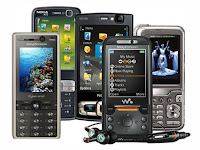 According to research firm Nielsen (whose mobile arm incorporates what was previously known as Telephia), more than 20m household in the US (0r 17%) have ditched landlines in favour of mobile (or as they would call it cell) phones. It signifies a rather steep increase.
According to research firm Nielsen (whose mobile arm incorporates what was previously known as Telephia), more than 20m household in the US (0r 17%) have ditched landlines in favour of mobile (or as they would call it cell) phones. It signifies a rather steep increase.
- U.S. cord cutters tend to have lower income-levels—59 percent have household incomes of $40,000 or less.
Smaller households, with just one or two residents, are more likely to cut the cord than larger households.
- Moving or changing jobs are the biggest life events associated with cord cutting: 31 percent of cord cutters moved prior to cord cutting and 22 percent changed jobs.
- Wireless substitutors tend to use their mobile phones more than their landline peers, 45 percent more per phone, but still save an average $33 per month in a household of one subscriber, less $6.69 for each additional wireless resident, when they cut the cord.Now, what I do find surprising is not the fact but rather the apparent reasons given for "wireless substitution". It is cost...On data, Nielsen also speculates:“Landline wireless substitution may just be the start. [...] As wireless data networks improve and speeds become more and more competitive with broadband, some consumers may cut the Internet cord, as well, favoring wireless data cards and other access through carrier networks.”Now this I understand, and the study shows indeed that wireless-only consumers use the mobile Internet more than twice as often as their primary access to the web than the good old-fashioned rest (11% vs 5%). It will be interesting to see how quick this substitution works though for the masses: people with money tend to retain their landlines, which suggests that a wireless-only solution is still less convenient. With hardware (computers, phones, etc) becoming increasingly able to access multiple wireless standards (i.e. via the mobile networks as well as WiFi, etc), this factor might however be evaporating relatively quickly.






 wing the
wing the 















